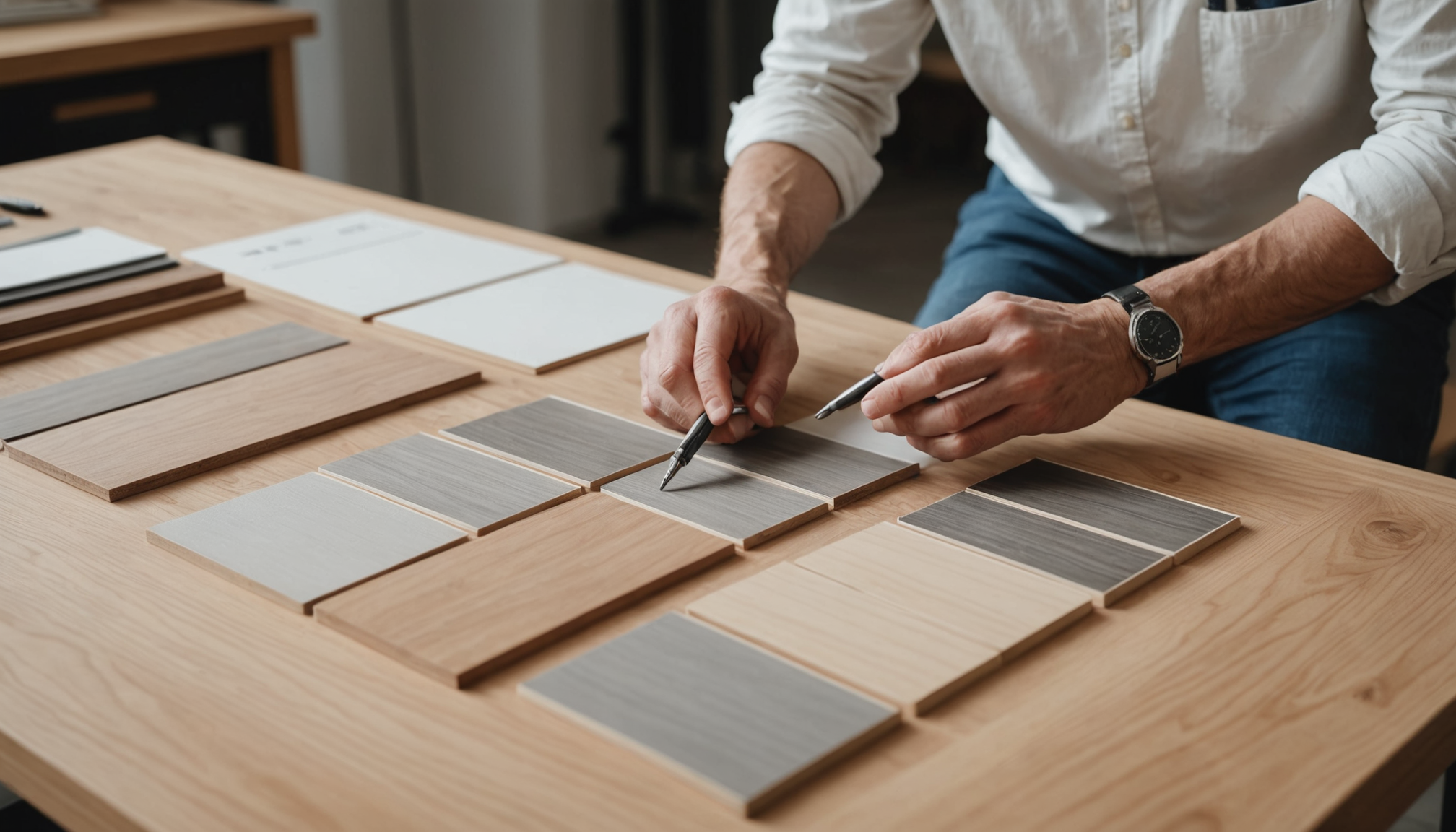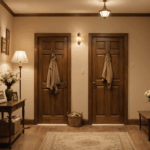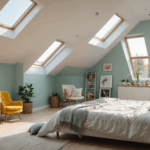When it comes to renovating or redesigning a space, the selection of materials can significantly impact the overall budget. Professional interior designers bring a wealth of knowledge and experience to the table, especially in identifying cost-effective materials that do not compromise on quality or aesthetics. By tapping into their expertise, clients can achieve the luxurious look they desire while adhering to budgetary constraints.
Interior designers are adept at sourcing materials that may not be widely known to the general public. These experts have access to a network of suppliers and can often find high-quality options at a fraction of the cost of more established brands. Their experience allows them to differentiate between materials that look expensive and those that are truly worth the investment, guiding clients in making informed decisions that benefit the project’s cost-efficiency without sacrificing style.
One of the key strategies professional designers use is assessing and comparing different materials based on a variety of factors. This involves evaluating materials for durability, maintenance requirements, and cost-effectiveness. For instance, a designer might suggest engineered wood flooring instead of solid hardwood, as it often offers the same aesthetic appeal at a lower price point and with added versatility in moisture-prone areas.
Below is a table for comparing cost-effective options versus traditional choices:
| Material Type | Traditional Choice | Cost-Effective Alternative |
| Flooring | Solid Hardwood | Engineered Wood |
| Countertops | Granite | Quartzite |
| Wall Treatments | Wallpaper | Paintable Textured Panels |
| Cabinetry | Custom Wood Cabinets | Semi-Custom Cabinets |
Another aspect of selecting cost-effective materials is understanding the lifecycle and long-term value of a product. Interior designers focus on proposing materials that last longer and require less maintenance, which translates into savings over time. For instance, choosing porcelain tiles instead of marble can significantly reduce the cost and maintenance burden without losing the overall aesthetic appeal of a space.
Moreover, designers keep current with industry trends and innovations that present new material options regularly. By staying informed about new developments, they are able to introduce sustainable solutions that are both cost-effective and environmentally friendly. This not only serves the client’s budgetary needs but also aligns with the increasing preference for eco-conscious design choices.
Ultimately, professional interior designers offer invaluable insight into the vast array of materials available, ensuring that each choice is strategically aligned with the client’s budget and desired outcome. Their ability to identify cost-effective solutions is a substantial benefit, often translating into significant overall project savings while maintaining a high standard of design excellence.
Maximizing space efficiency
When it comes to optimizing the use of available space, interior designers are masters of ingenuity. They employ a series of strategic steps and techniques to ensure that every square foot is used to its fullest potential, helping to avoid unnecessary expenses related to space remodeling or expansion. Here is how they work their magic:
1. Assessing the Existing Layout:
– The process begins with a thorough evaluation of the current space and its limitations. Designers carefully analyze the flow, purpose, and natural light of each room to identify any potential improvements in layout efficiency. Their trained eye can spot areas that might not be utilized effectively and suggest changes that add both function and aesthetic value.
2. Decluttering and Storage Solutions:
– Designers often propose multi-functional furniture and customized storage solutions to maximize usability. This might include built-in shelving, under-stair storage, or convertible furniture that serves multiple purposes. For example, a sofa bed or a dining table with storage can instantly make a space feel less crowded, reducing the need for additional room or furniture pieces.
3. Creating Zones for Different Activities:
– Efficient space utilization often involves dividing an open area into functional zones. Designers use rugs, furniture arrangement, and lighting to delineate spaces dedicated to different activities such as dining, working, and relaxation. This structured approach ensures that space is used efficiently without feeling cramped or cluttered.
4. Optimizing Traffic Flow:
– Designers pay special attention to traffic flow within a space, ensuring that movement from one area to another is smooth and unobstructed. By reconfiguring furniture layouts, they can create more open pathways that enhance both the functionality and feel of the space.
5. Employing Vertical Space:
– Utilizing vertical space is another technique that designers use to maximize efficiency. Tall bookshelves, hanging plants, or wall-mounted storage units can draw the eye upwards, creating an illusion of more space while offering practical storage solutions.
6. Incorporating Light and Mirrors:
– Proper lighting and the strategic placement of mirrors can make spaces feel larger and more welcoming. Designers often use these elements to enhance natural light or reflect views, creating a more open and airy ambiance without modifying the actual dimensions.
By applying these systematic approaches, interior designers transform spaces in a way that maximizes their potential and functionality. This not only improves the overall lifestyle experience within the home but also eliminates the need for more extensive and costly renovations. In doing so, they offer substantial financial savings by avoiding hasty and expensive remodeling projects.
Leveraging trade discounts
One of the often underappreciated advantages of working with an interior designer is their ability to unlock substantial financial savings through trade discounts. Designers frequently maintain strong relationships with manufacturers, suppliers, and retailers, which grant them access to exclusive discounts and promotions not available to the general public. This purchasing power allows clients to acquire premium quality products at significantly reduced prices, ensuring they stretch their budget further without compromising on quality or style.
These discounts can apply across a wide range of products, from furniture and accessories to fixtures and finishes. For example, when outfitting a home with new furniture, a designer might secure a 15% to 40% discount on retail prices due to their established partnerships and bulk purchasing capabilities. This kind of savings can be instrumental in adhering to budget constraints while still achieving the desired aesthetic and functionality.
Moreover, designers often have insight into upcoming sales, clearance events, and discontinued lines, allowing clients to benefit from even greater price reductions. This strategic purchasing ensures that clients receive maximum value for their investment, obtaining distinctive, high-quality items that might otherwise be prohibitively expensive.
Another key benefit of leveraging trade discounts through a designer is the access to bespoke and custom-made pieces. Many designers forge close ties with artisans and craftspeople who offer their creations at reduced rates as part of a collaborative or ongoing relationship. This enables clients to acquire custom furniture and unique art pieces that are tailored to their specific tastes and needs, providing exclusivity and personalization that greatly enhance the overall design while remaining within budget.
Working with a designer doesn’t just provide immediate financial savings; it also affects the long-term value of investments. By ensuring that each purchase is made with the advantage of a discount, clients can allocate resources more effectively within a project, potentially redirecting funds to enhance other design aspects or materials.
In summary, leveraging trade discounts is a substantial and tangible benefit of hiring an interior designer. Not only does it allow for significant cost savings on high-quality products, but it also opens the door to a curated selection of items that elevate any space far beyond what one’s uninformed budget might typically allow. Utilizing these savings is a smart, strategic move that aligns with both financial prudence and the pursuit of a sophisticated, personalised interior environment.
Preventing costly mistakes
An insightful and often overlooked aspect of engaging an interior designer is how they can prevent costly mistakes throughout the design or renovation process. When embarking on a home project, beginners and even seasoned homeowners can make decisions that might seem cost-effective in the short term but end up incurring more expenses down the line. Designers, with their experience and expertise, play a pivotal role in guiding clients away from these pitfalls.
One of the key areas where designers save clients money is in accurate project planning. Designers possess a deep understanding of the sequence and scope of tasks involved in home renovations. They can create detailed plans and timelines that ensure every element is considered and coordinated. This level of planning prevents issues like purchasing materials in the wrong order, hiring contractors prematurely, or having to redo work due to overlooked details—all of which can escalate costs quickly.
Avoiding sizing errors is another fundamental benefit of working with a designer. Interior designers meticulously measure spaces and furniture to prevent mismatches—the embarrassment and expense of ordering a sectional that overwhelms a room or artwork that looks dwarfing on a wall. Through precise calculations and expertise, they ensure that every piece fits flawlessly within the space, saving costs associated with returns, exchanges, or even remodeling to make things fit.
Moreover, designers are seasoned at foreseeing design trends and advising against fleeting styles that might become dated quickly. Investing in a timeless design not only ensures longevity but also eliminates the need for frequent updates or overhauls. They encourage choices that reflect the client’s personal style while maintaining versatility that stands the test of time.
When it comes to color palettes, a designer’s trained eye considers not just aesthetics but also how color affects mood and perception of space. Selecting the wrong color scheme can result in additional costs to repaint or replace furniture that ultimately doesn’t align with the desired ambiance or the function of the space. By choosing colors that harmonize with the architecture and lighting, designers prevent costly re-dos.
Furthermore, navigating building codes and licensing requirements can be a daunting task for many homeowners, and mistakes here can be financially devastating. Interior designers are familiar with these regulations and help ensure that all renovations are up to code, securing necessary permits and approvals to avoid fines or project shutdowns.
Lastly, managing the project as an intermediary between the client and contractors, designers keep the project on track and on budget. Their ability to communicate effectively and manage expectations can prevent misunderstandings and miscommunications that often lead to unnecessary expenses.
Utilizing an interior designer to guide decisions creates a strategic approach that not only streamlines the process and optimizes the outcome but also safeguards the client’s investment, ultimately translating into substantial savings on the entire project.
Enhancing property value
Interior designers can significantly enhance the value of a property, making their services a worthwhile investment beyond mere aesthetic improvement. They possess the ability to elevate the overall appeal of a space, which is a crucial factor when considering resale potential. A well-designed interior not only attracts potential buyers but can also command higher market prices.
By creating spaces that reflect high standards of quality, functionality, and elegance, designers help increase a home’s marketability. They focus on creating cohesive environments, selecting timeless styles, and implementing practical designs that appeal to a wide audience. This strategic approach ensures that homes remain attractive even as trends evolve, thus protecting the property’s value over time.
Investing in the expertise of seasoned designers means choosing features and finishes that cater to current demands without compromising on long-term appeal. For instance, they might suggest open floor plans, energy-efficient installations, or smart home technology—features that are highly valued in the market today. These enhancements not only improve the livability of the space but also contribute to increased property evaluations.
Moreover, designers pay particular attention to the quality of materials and workmanship. By ensuring that every aspect of the design is executed to a high standard, they add durability and reduce future repair and maintenance costs, which are factors often scrutinized during property evaluations. This quality assurance intrinsically boosts the perceived value of the home.
A noteworthy advantage of engaging an interior designer is their expertise in creating spaces that resonate with the local market trends and demographic preferences. Whether enhancing curb appeal through landscaping, choosing compatible color palettes and materials, or incorporating multi-functional spaces, designers tailor homes to the profiles of potential buyers, which broadens the market reach and enhances sales prospects.
In essence, the capability of an interior designer to enhance property value is multi-layered. Through thoughtful planning, innovative use of space, and high-quality design execution, they ensure that a home not only meets the immediate needs of its inhabitants but also remains a lucrative asset for the future. This alignment of aesthetics, function, and market value is a testament to the profound impact that professional interior design can have on financial returns in real estate.
In conclusion, hiring an interior designer is a strategic investment that can lead to significant monetary savings and better financial outcomes in the long run. From identifying cost-effective materials to maximizing space efficiency, leveraging trade discounts, preventing costly mistakes, and enhancing property value, designers provide expertise that transcends mere aesthetics. By marrying functionality with style, they create spaces that not only reflect the personality and needs of homeowners but also increase the longevity and value of the property. Ultimately, the guidance of a professional interior designer can transform what might seem a considerable expense into a truly rewarding investment.


